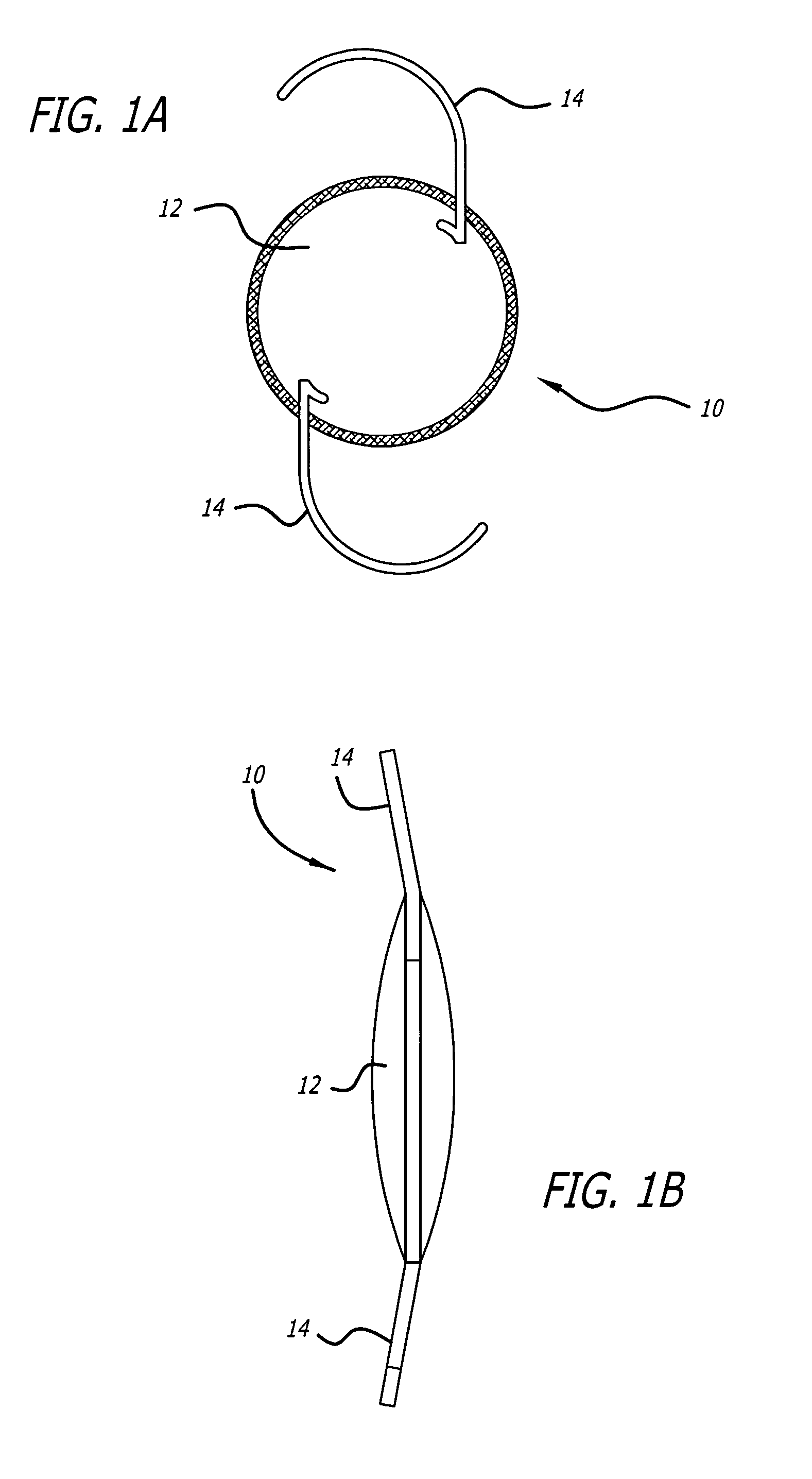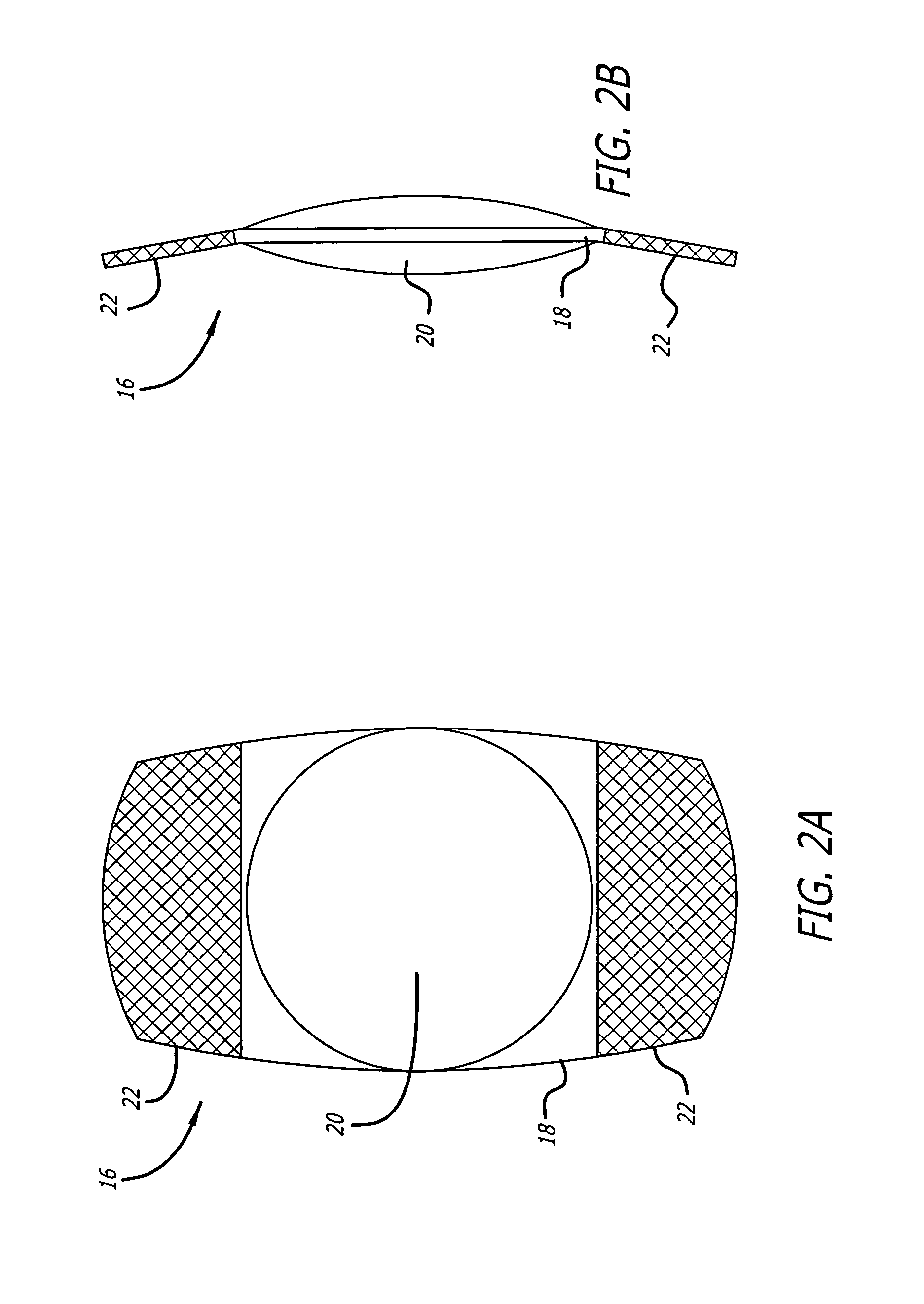High refractive index and optically clear copoly (carbosilane and siloxane) elastomers
a copoly and optically clear technology, applied in the field of high refractive index and optically clear copoly (carbosilane and siloxane) elastomers, can solve the problems of occlusion ultimately onto the retina, hazy and relatively inflexible structure of the lens matrix of the crystalline lens, and occlusion of the amount of light passing through the crystalline lens. , to achieve the effect o
- Summary
- Abstract
- Description
- Claims
- Application Information
AI Technical Summary
Benefits of technology
Problems solved by technology
Method used
Image
Examples
example 1
[0039]This example illustrates the preparation of oligo(carbosilane and siloxane) (A) which is used in the preparation of the copoly(carbosilane and siloxane) elastomer. In a 250 ml three-necked round bottom flask, 150 grams of 1,3-divinyltetramethyldisiloxane and 13 milligrams of platinum catalyst were stirred and heated to 100° C. Over a period of 25 minutes, 25 grams of tetramethyldisiloxane were added dropwise to the flask. The mixture was stirred at 100° C. for an additional hour. Excess 1,3-divinyltetramethyldisiloxane was removed under vacuum conditions until no further low boiling point material remained, leaving behind a yellow, slightly viscous material. GPC analysis showed that this material had an average molecular weight of about 500. 1H NMR spectra showed that the material was oligo(carbosilane and siloxane).
example 2
[0040]A higher molecular weight oligo(carbosilane and siloxane) (B) was prepared from the oligo(carbosilane and siloxane) (A) of Example 1 as follows. In a 250 ml three-necked round bottom flask, 15 grams of tetramethyldisiloxane and 13 milligrams of platinum catalyst were stirred and heated to 80° C. Over a period of 15 minutes, 15 grams of oligo(carbosilane and siloxane) (A) were added dropwise to the flask. The mixture was stirred at 100° C. for an additional hour. Excess tetramethyldisiloxane was removed under vacuum conditions until no further low boiling point material remained. The mixture was then cooled to room temperature.
[0041]Next, 50 grams of 1,3-divinyltetramethyldisiloxane and 13 milligrams of catalyst are added to a second 250 ml three-necked round bottom flask and stirred and heated to 100° C. Over a period of 15 minutes, the material from the first flask was added dropwise to the second flask. The mixture was stirred at 100° C. for an additional hour. Low boiling p...
example 3
[0042]Examples 3 through 7 illustrate the preparation of copoly(carbosilane and siloxane) from oligo(carbosilane and siloxane) A and B in accordance with principles of the present invention.
[0043]In a 500 ml three-necked round bottom flask, 44.6 grams of octaphenylcyclotetrasiloxane, 93.5 grams of octamethylcyclotetrasiloxane, 5.1 grams of vinyldimethylsiloxy-terminated oligo(carbosilane and siloxane) (B) and 0.14 grams of N-catalyst were mixed. The mixture was stirred and heated to 100° to 120° C. for 2 to 4 hours until the octaphenylcyclotetrasiloxane had completely dissolved and the mixture turned into a viscous brown solution. The mixture was then cooled to room temperature and 150 ml of methylene chloride was added and stirred into the mixture. Next, 75 ml of methyl alcohol and 100 ml of distilled water were added and the mixture was stirred again at room temperature for 15 minutes. The organic layer was separated and another 75 ml of methyl alcohol and 100 ml of distilled wate...
PUM
| Property | Measurement | Unit |
|---|---|---|
| refractive index | aaaaa | aaaaa |
| diameter | aaaaa | aaaaa |
| diameter | aaaaa | aaaaa |
Abstract
Description
Claims
Application Information
 Login to View More
Login to View More - R&D
- Intellectual Property
- Life Sciences
- Materials
- Tech Scout
- Unparalleled Data Quality
- Higher Quality Content
- 60% Fewer Hallucinations
Browse by: Latest US Patents, China's latest patents, Technical Efficacy Thesaurus, Application Domain, Technology Topic, Popular Technical Reports.
© 2025 PatSnap. All rights reserved.Legal|Privacy policy|Modern Slavery Act Transparency Statement|Sitemap|About US| Contact US: help@patsnap.com



